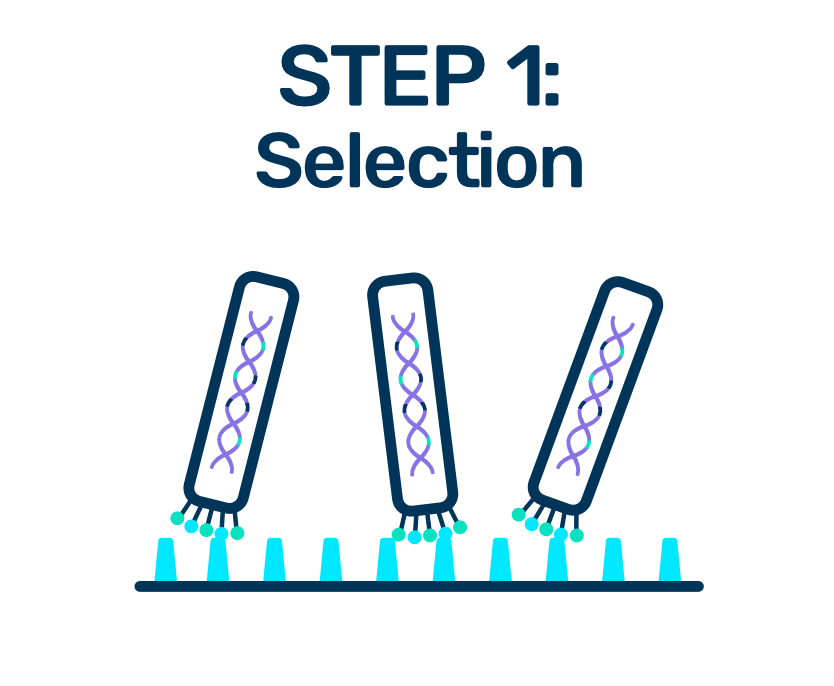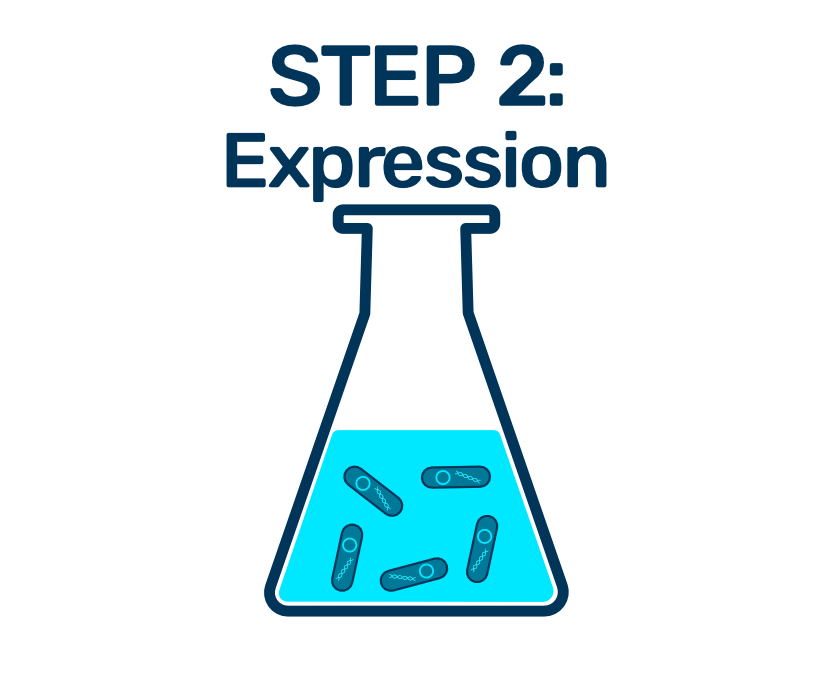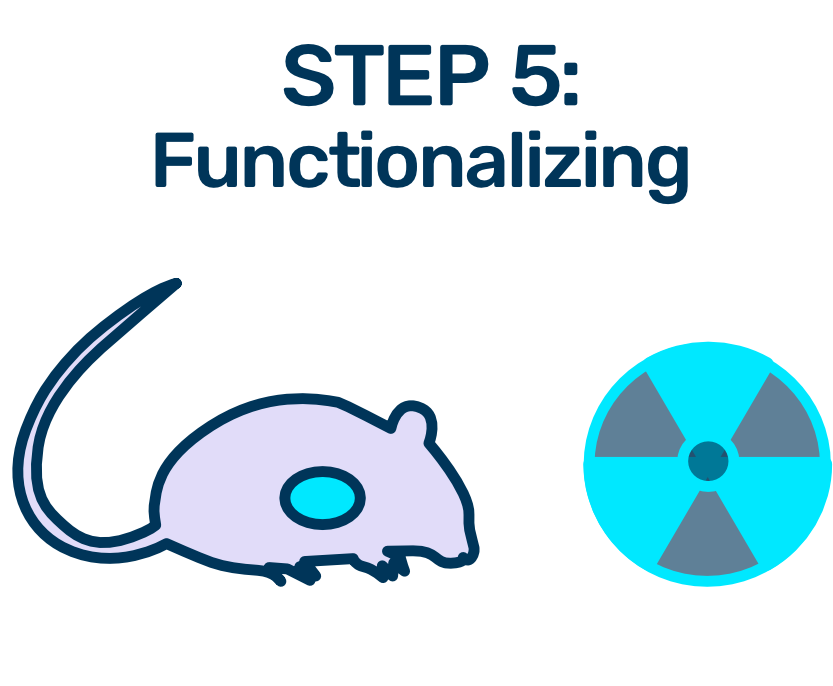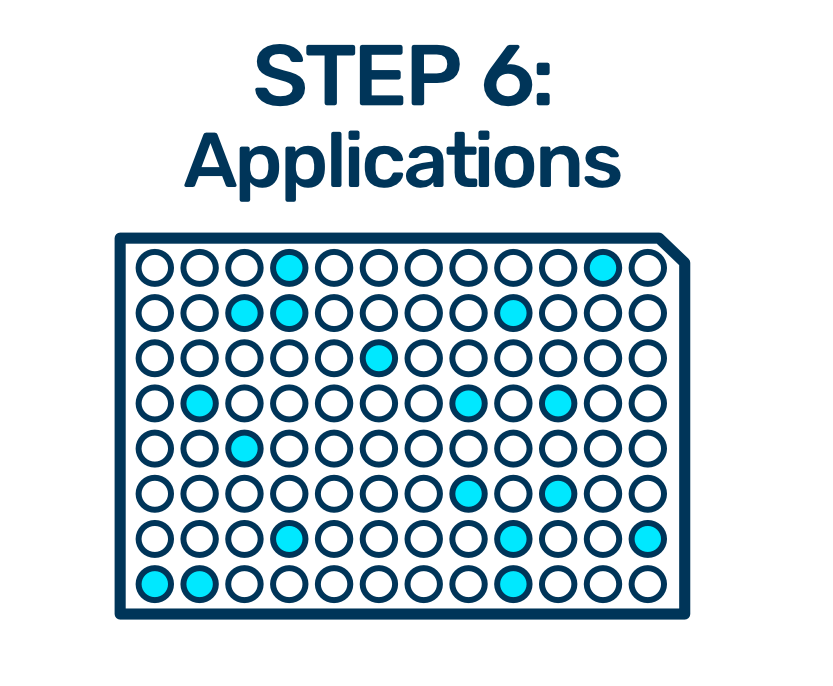Cortalix Nanobody Services
Discover our 6-step services solutions
Services
At Cortalix, our comprehensive suite of services unfolds through a strategically orchestrated sequence of steps, ensuring precision and efficacy in the development of nanobodies tailored to your specific needs. It all commences with the meticulous selection of positive clones from our nanobody libraries, achieved through the innovative process of panning and selection utilizing phage display technology.
Step 1: Panning & Selection – We kick off by isolating positive clones that exhibit a high binding affinity to your target of interest, setting the foundation for a successful nanobody development journey.
Step 2: Expression – Selected positive clones will be expressed in suitable microbial production hosts, such as E. coli or yeast cells. This step is pivotal, as it marks the transition from identification to production, laying the groundwork for the subsequent stages.
Step 3: Characterization – Each nanobody variant is subjected to a thorough characterization process. This ensures that only nanobodies possessing the desired properties make it to the next phase, enhancing the likelihood of achieving optimal outcomes.
Step 4: Genetic Engineering – Precision takes center stage as we employ advanced techniques to design a functional nanobody with the exact properties you seek. This step allows for customization, ensuring the final product aligns seamlessly with your unique requirements.
Step 5: Functionalizing – The final stretch involves engineering one or more selected nanobodies to meet the specific demands of their intended purpose. This step ensures the adaptability and effectiveness of the nanobodies in their designated applications.
Step 6: Applications – Finally, nanobodies are very suitable for developing sensitive ELISAs in which small epitopes of your target protein can be recognized and quantified or for developing specific affinity columns.
The flexibility of our approach shines through, as the extent of our involvement depends on your project requirements. Whether it’s a full-scale project or a targeted engagement involving a specific step, Cortalix is committed to deliver excellence. Furthermore, our expertise extends beyond the described core steps, with additional services available to cater to diverse applications. Engage with us, and let’s explore the possibilities together, leveraging our experience across various domains to meet your unique needs.
Frequently Asked Questions
How unique are the nanobodies that Cortalix delivers?
The libraries that Cortalix uses are very diverse and we guarantee that the clones that are delivered to the customer are unique. If another customer would like to have nanobodies selected for exactly the same target, we will ensure that the same nanobody sequence is never delivered twice.
Do we have full ownership of the delivered nanobody sequences ?
Yes, in almost all cases you get full ownership of the nanobody DNA and amino acid sequence. If you want to use one of our specific libraries that has specific properties, such as a patented amino acid sequence in, for example, the spacer or linker, we can provide you with a non-exclusive license for worldwide commercial use. This also gives you additional advantages that your nanobody may already be protected for use by others.
Can we only request STEP 1 Selection services?
Yes, that’s actually a very logical step to start with.
However, for any of the later steps it is often necessary to also include earlier steps, such as cloning, expressing and functionalizing nanobodies by applying specific linkers and functional groups. But just ask what the options are and we will figure it out together.
What is the turnaround time for step 1, supplying a selection of nanobody binders?
If everything goes well, we can do 2 to 3 selection rounds in a week. But because no target protein is the same, some optimization has to be done during the selection process and that takes time. On average we need 3 weeks to select the number of binders as agreed with you. Sometimes it is also necessary to carry out more selection rounds. Ideally, this is 3 rounds, but specific properties of the target may lead to the number of selection rounds being expanded to obtain sufficient unique binders.
Do we only get the amino acid sequence at the end of STEP 1 or also the protein?
No, if desired, we also provide the DNA sequence of the nanobody itself. The amino acid (and DNA) sequence of any spacer and/or linker is not provided because this is part of an additional service (Step 5 and/or 6). If it concerns a proprietary spacer and/or linker, a non-exclusive license can be granted regarding its worldwide use.
Do you guarantee a number of unique nanobody binders from your library?
Yes, if we accept the target you supply (the protein is pure enough, large enough and can be immobilized on a 96-well plate), we guarantee the selection and delivery of at least 2 unique binders. If the selection process of multiple selection rounds does not result in 2 unique binders, we will start a second selection process free of charge in a 96-well plate. If this still results in less than 2 binders, we will ultimately only charge 50% of the agreed price for this step.
What is the quantity and quality of the expressed nanobody from step 2?
If the protein from step 2 is likely to be used for the initial characterization of the nanobody, 0.5 – 1 mg is often sufficient. An initial assessment of affinity, specificity and selectivity can then be made. In that case the nanobdoy is cloned into a production strain of E. coli. The protein produced is then purified via a number of steps on suitable columns and concentrated in, for example, a phosphate buffer. The purity of the nanobody from this first purification is generally >95%. For larger quantities and for other purposes the system will have to be slightly adjusted.
Which functional groups do you conjugate?
We have shown that we can conjugate multiple functional groups to nanobodies with high coupling rate, such as sCy7, NIR-800-CW, NOTA, DOTA, and DTPA, long chain fatty acids, among others. We have the most experience with maleimide conjugations to free cysteines at the C-terminus of the nanobody. For this reason, we avoid the introduction of cysteines into the CDRs of the nanobodies to prevent binding issues after conjugating functional groups. The purity of the end result can be tested with LC-MS, and is often between 90-99%.






